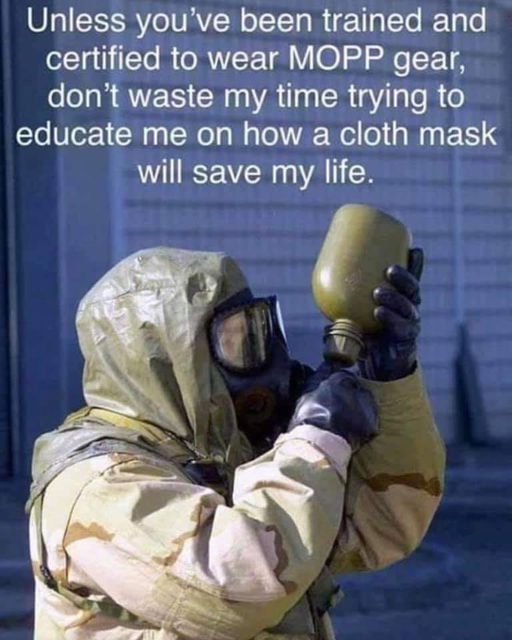I sent a rather sarcastic letter to the editor for my local rag. It was in the form of a question, which you’ll see below. The following week, they ran another TLE purporting to answer the question. In fact, the writer substituted her own strawman question, and ignored mine.
Our paper only allows one LTE per person every 45 days (unless, as I’ve seen over the years, the person supports the paper’s fairly leftwing agenda), and I wanted to address the issue in more detail than would fit into a 500 word LTE. I wrote a column and offered it to paper gratis.
The editor’s response?
I hope you understand. We have specific criteria for guest columnists, such as having a level of authority or educational expertise that gives that writer a unique perspective. I don’t know your professional background, but if you were a physician or held a PhD in a related discipline, I am assuming you would have made that known by now.
Nope, no PhD.Just several decades of scientific and technical training, applying observation, measurement and testing, mathematical analysis, and problem solving.
Therefore, apparently I am unqualified to cite PhDs, the FDA, and the CDC.
I decided to simply post the column here. Ironically, based on ssite traffic, I should get more readers than if it only appeared in the little T&G weekly.
COVID-19 Masking
Sandy Burch helpfully attempted to set me — and my hypothetical friend — straight on how masks stop the transmission of the SARS-CoV-2 virus. Sadly, the question she chose to answer was her own, not mine. (LTE: Reader answers writer’s question about masks, September 16, 2021)
Ms. Burch wisely proclaimed that masks filter down to the 0.3 micron size. That is partially correct. N95-type masks are rated to block 95% of particles and aerosols down to that size. However, while her own friend explained that in terms of Brownian motion and mechanical filtering, that isn’t how N95 masks are so effective at that level. These masks employ an electrostatic effect which actively attracts and traps those small particles. The effect is compromised when the mask is dampened (from wearing it too long, for instance).
My question spoke of the masks most commonly seen on the few people who even bother with masks in this area: procedure/dust masks and cloth masks.
“Can anyone explain how a procedure/dust mask, that passes 4 micron smoke particles, blocks .125 micron aerosolized viruses?” (LTE: Reader seeks assistance on mask questions, September 9, 2021)
As I have personally tested, these masks will pass smoke. Smoke particles are typically 4 microns in size. So my question was how a mask that passes those comparatively large particles magically blocks smaller aerosols.
How much smaller? We have two clues. The first Ms. Burch already provided: N95 masks only block down to 0.3 microns, and are 95% effective. Clearly some are smaller yet.
The second clue is found in “The Mechanism of Breath Aerosol Formation (2009).” Actual measurements of human-exhaled aerosols gave a range of 0.5 to 0.9 microns. But even the smallest 0.5 micron aerosols detected were merely the smallest that the researchers’ equipment was capable of resolving.
Interestingly, the University of Waterloo researchers recently published a paper on how effective differing types of masks are in preventing the transmission of SARS-CoV-2, “Experimental investigation of indoor aerosol dispersion and accumulation in the context of COVID-19: Effects of masks and ventilation (2021).” They gave the following results, and recommended mask use:
R95: 60%
KN95: 46%
Cloth (3-ply): 10%
Surgical: 12%
But there is a slight problem with applying those numbers to COVID-19 as Professor Yarusevycha did. His study used aerosols with an average size of 1 micron. He found that surgical masks are only twelve percent effective at stopping aerosols LARGER than real exhalation aerosols measured by Johnson & Morawska in 2009.
Thus the question of why we should expect these masks to mysteriously work on aerosolized SARS-CoV-2. The CDC says they do. The federal government MANDATES the use of these masks in some settings, as do some states. But no one will explain HOW they somehow work.
The FDA on the other hand is dubious of surgical masks (N95 Respirators, Surgical Masks, Face Masks, and Barrier Face Coverings):N95 Respirators, Surgical Masks, Face Masks, and Barrier Face Coverings
“While a surgical mask may be effective in blocking splashes and large-particle droplets, a face mask, by design, it does not filter or block very small particles in the air that may be transmitted by coughs, sneezes, or certain medical procedures.”
Anecdotally, there is evidence they do not. An individual with whom I am acquainted was diagnosed with COVID-19 last year. She recently ranted about that because she had done everything “they” told her to do: She socially distanced, she isolated in accordance with the lockdown, she wore gloves, washed her hands as often as possible, she used hand sanitizer, and she used disinfectant wipes on surfaces.
And she wore a mask, almost fanatically. None of it worked.
That’s only anecdotal. It could be coincidence. Let us ask the Centers for Disease Control what they found. The CDC helpfully published “Community and Close Contact Exposures Associated with COVID-19 Among Symptomatic Adults ≥18 Years in 11 Outpatient Health Care Facilities — United States, July 2020.”
“Reported use of cloth face covering or mask 14 days before illness onset”
Never: 3.9%
Rarely: 3.9%
Sometimes: 7.2%
Often: 14.4%
Always: 70.6%
If masks work, the CDC should have found reversed results from those. What they found is that people who never wore masks rarely got sick, and that those who DID wear masks accounted the vast majority of COVID-19 cases.
Personally, with two exceptions, I do not bother with a mask, unless I must enter private property where a mask is required. Those exceptions are the smoke test I mentioned earlier, and once when my religiously masking acquaintance visited; I wore it to humor her. And yet, while SARS-CoV-2 — COVID-19 — is known to have been in the wild in the United States for 21 months, I have not had COVID-19.
Based on FACTS from scientific research and provided by the very government that mandates masks, I think that masks are the least effective way of avoiding illness. Good nutrition, decent health (keep your weight down) and proper hygiene (wash your darned hands) will do more than even an N95 mask can do.
Added: I just saw a quite apropos meme.
Yes, I have. You?
| If you found this post useful, please consider dropping something in my tip jar. I could really use the money, what with new cell phone, ISP bills, SSL certificate, and general life expenses.Click here to donate via PayPal. |

